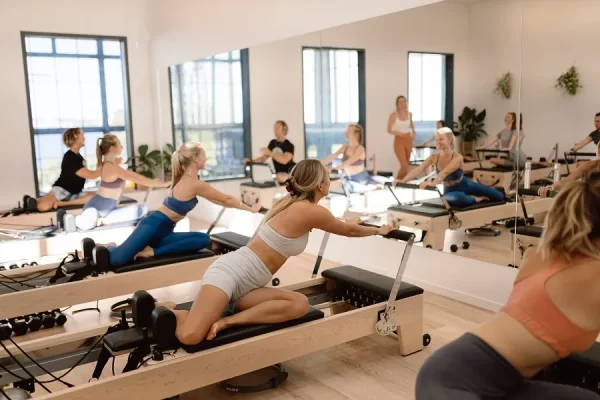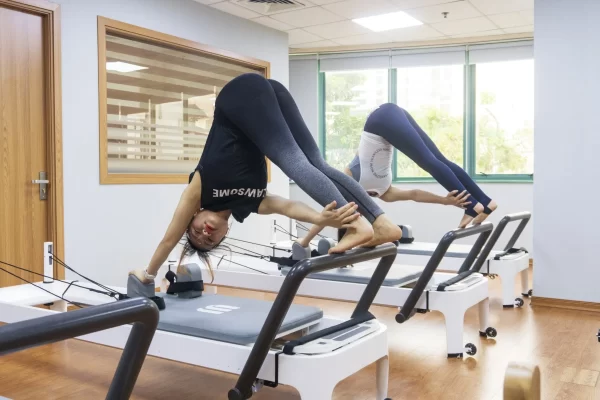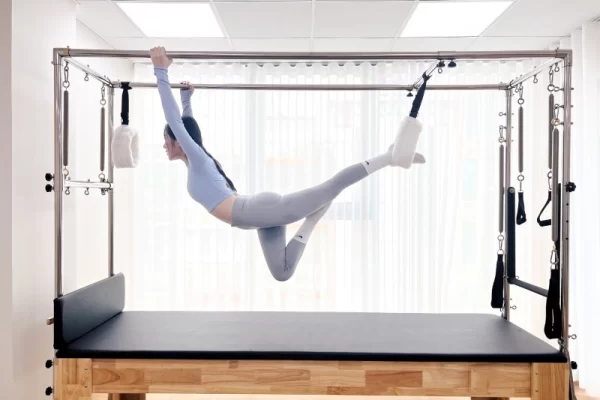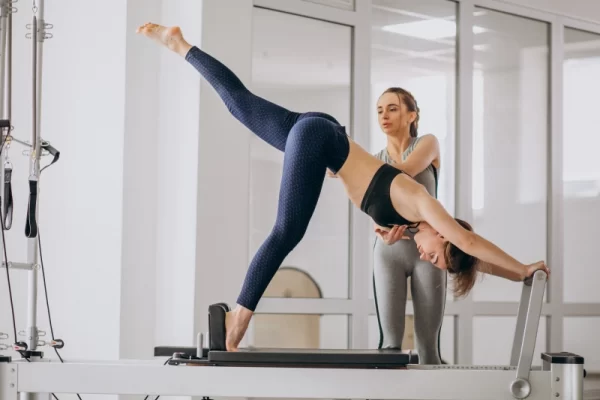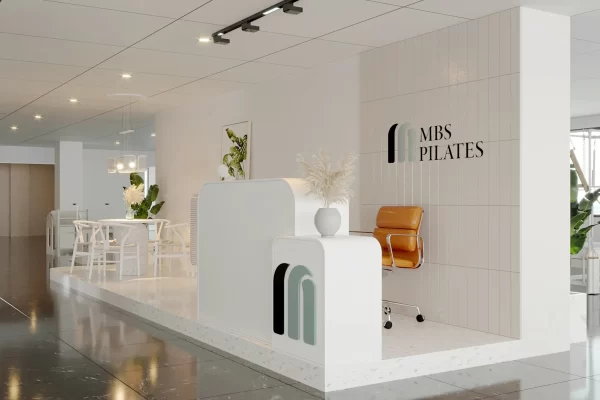Pilates Reformer Machine: The Ultimate Tool for Strength & Flexibility
21/11/2025The Pilates Reformer machine is not just a standard workout tool. It is a powerful system that enhances flexibility, balance, and overall body health. With its unique design and versatile features, the Reformer has become an essential part of many Pilates sessions. Let’s explore the benefits and surprising potential of this “magical” piece of equipment.
Overview of the Pilates Reformer Machine
The Pilates Reformer is a traditional Pilates apparatus designed in the 1920s by Joseph Pilates, the founder of the method. Interestingly, many people seeing a Reformer for the first time feel intimidated, as its structure resembles medieval torture devices.
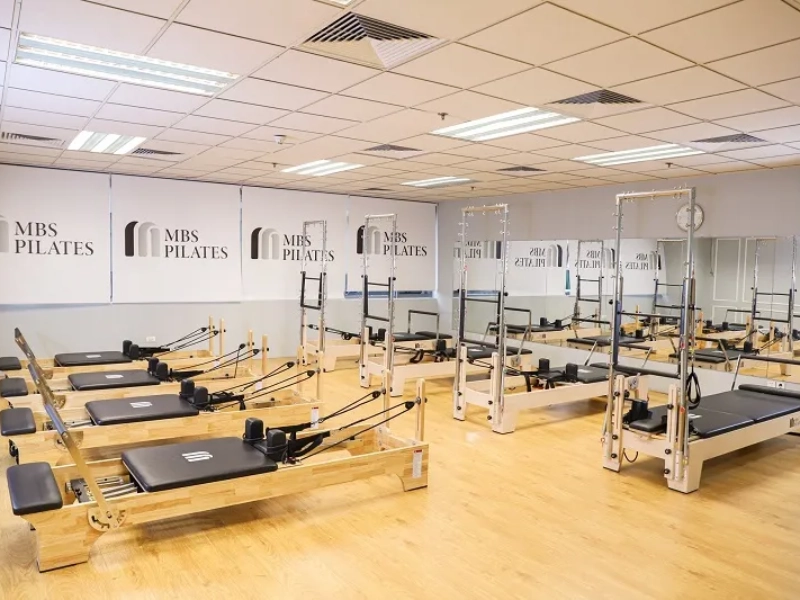
The Pilates Reformer machine was designed by Joseph Pilates himself.
Reformer exercises help improve height, strength, endurance, and overall body balance. During a Reformer session, you often push, pull, or stabilize the carriage in various positions.
One of the biggest advantages of the machine Pilates Reformer is its adaptability. It allows users to comfortably perform movements such as seated, supine, standing pulls, pushes, or bar work. Modern Reformers also include more attachments than the original design to enhance movement support.
Design and How the Pilates Reformer Machine Works
The Pilates Reformer looks like a rectangular frame with a moving carriage attached to a spring based resistance system. These springs allow users to adjust resistance levels as the carriage glides along the frame, powered by the user’s own strength and body weight. The machine’s structure ensures you stay stable and do not slide off the end.
A footbar is located at one end an adjustable bar connected to the springs. Your hands and feet may be placed on this bar depending on the exercise.

The design and operation of the Pilates Reformer machine.
The Reformer also includes long straps with handles so you can place your hands or feet inside. Spring tension adjusts to modify exercises for different fitness levels and skill requirements. The Reformer’s springs provide potent resistance. Most machines come with up to five springs that, when combined, create significant tension. Using only one or two springs provides lighter resistance, ideal for targeting specific muscles or refining technique.
This versatility makes the machine Pilates Reformer suitable for various goals strength training, mobility improvement, or injury rehabilitation.
As for materials, Reformers are typically built with steel or wooden frames depending on the manufacturer, with slight aesthetic differences.
Who Should Use the Pilates Reformer
- Beginners seeking gentle but effective exercise.
- Athletes wanting to improve performance and prevent injury.
- Older adults or those undergoing rehabilitation.
- Pregnant and postpartum women (under professional guidance).
4 Things to Know Before Using a Pilates Reformer Machine
1. Never underestimate the importance of professional guidance
Although powerful, the Reformer is not easy for beginners. Unlike traditional gym equipment, it requires precise alignment and subtle movement control.
Note:
- Train with a certified instructor for at least the first 3-5 sessions.
- A small misalignment can lead to injury or reduced results.
2. Do not underestimate the spring resistance
Reformers use springs instead of weights, requiring you to control the movement both on extension and return activating deep stabilizing muscles but also causing quick fatigue.
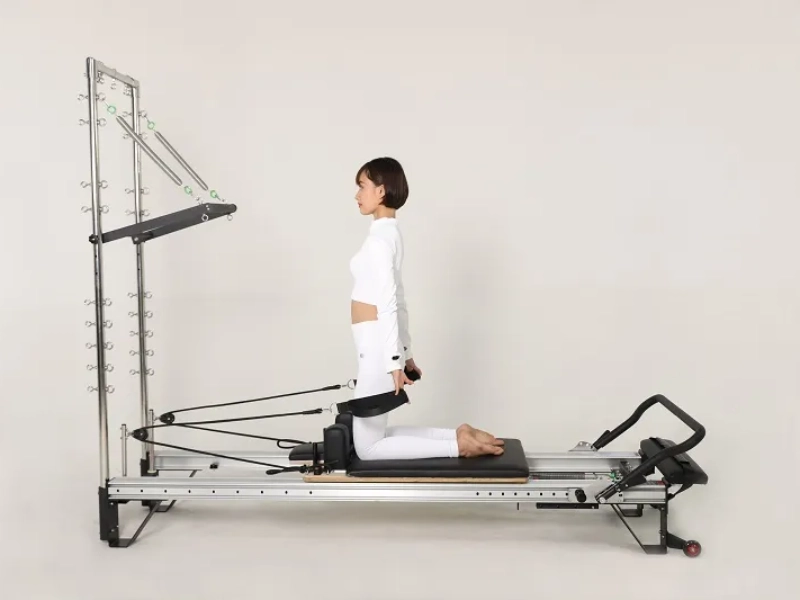
Reformer training often engages more muscle groups in a single exercise.
Note:
- Avoid starting with high spring tension. Begin light to master control.
- Listen to your body and reduce resistance if you feel excessive shaking or strain.
3. Everyone trains differentl know your own body
Each person has different mobility limits, strengths, and health conditions. An exercise that works for others may not suit you.
Note:
- Inform your instructor about injuries (especially spine, knees, or neck).
- Pregnant women and older adults should work closely with certified Pilates professionals.
4. Breathing and core engagement your “golden keys”
Proper breathing helps activate the core, stabilize the spine, and improve circulation. Pilates breathing is intentional not instinctive.
Note:
- Practice slow, deep diaphragmatic breathing coordinated with movement.
- Focus on activating the transverse abdominis the “core of your core.”
The Outstanding Benefits of the Pilates Reformer Machine
1. Full body conditioning
Pilates strongly targets the body’s core. Training on the Reformer strengthens the entire body, especially arms and legs. Using the straps enables movements for the arms, legs, hips, and shoulders.
With consistent practice, you will feel multiple muscle groups working together, encouraging balanced, holistic development.
2. Adjustable resistance for personalized training
The Pilates Reformer machine uses springs for resistance, allowing easy intensity adjustments. For example, if squats are difficult, you can perform them lying on the Reformer by pressing your feet into the footbar reducing pressure on the knees.
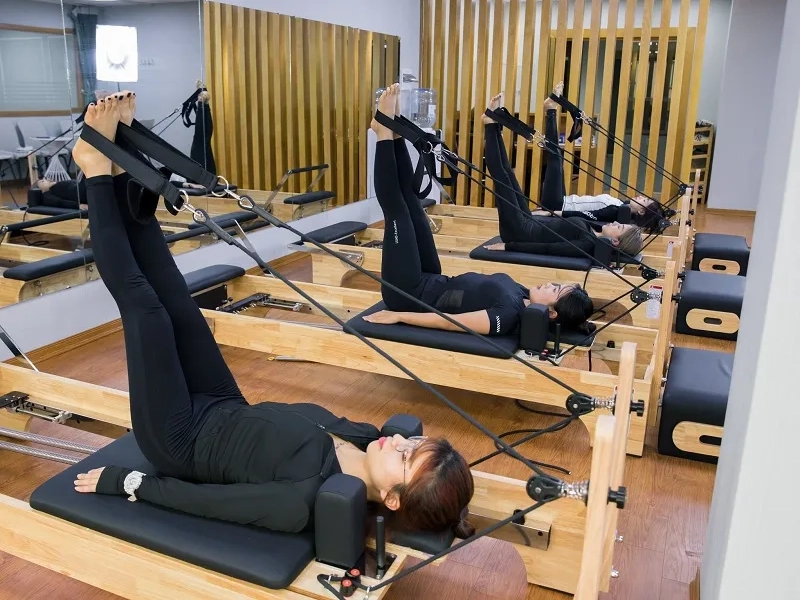
The Reformer helps users adjust resistance effectively during training.
3. Muscle strengthening through three types of movement
Reformer exercises target muscles through concentric, eccentric, and isometric actions:
- Concentric movement: Active muscle shortening against resistance
- Eccentric movement: Controlled muscle lengthening (e.g., lowering in a plank)
- Isometric movement: Holding a stable position requiring strong control
4. Better posture and body alignment
The Pilates Reformer machine can be combined with additional equipment such as poles, jump boards, or bars. This enables both closed chain and open chain movements with either fixed or free limbs. Exercises can be performed lying, kneeling, or standing, allowing customization based on level and goals.
5. Joint friendly and low impact training
The Reformer reduces pressure on joints, making it ideal for runners, people with arthritis, or those needing gentle, supportive movement. It is also suitable for individuals who struggle with high impact exercises, helping reduce pain and prevent injuries.
With its wide range of exercises and flexible adjustments, the Pilates Reformer machine is not just a training tool it is a trusted companion on your journey to better health. Continue exploring other Pilates equipment to make each session more meaningful and bring you closer to your fitness goals.

